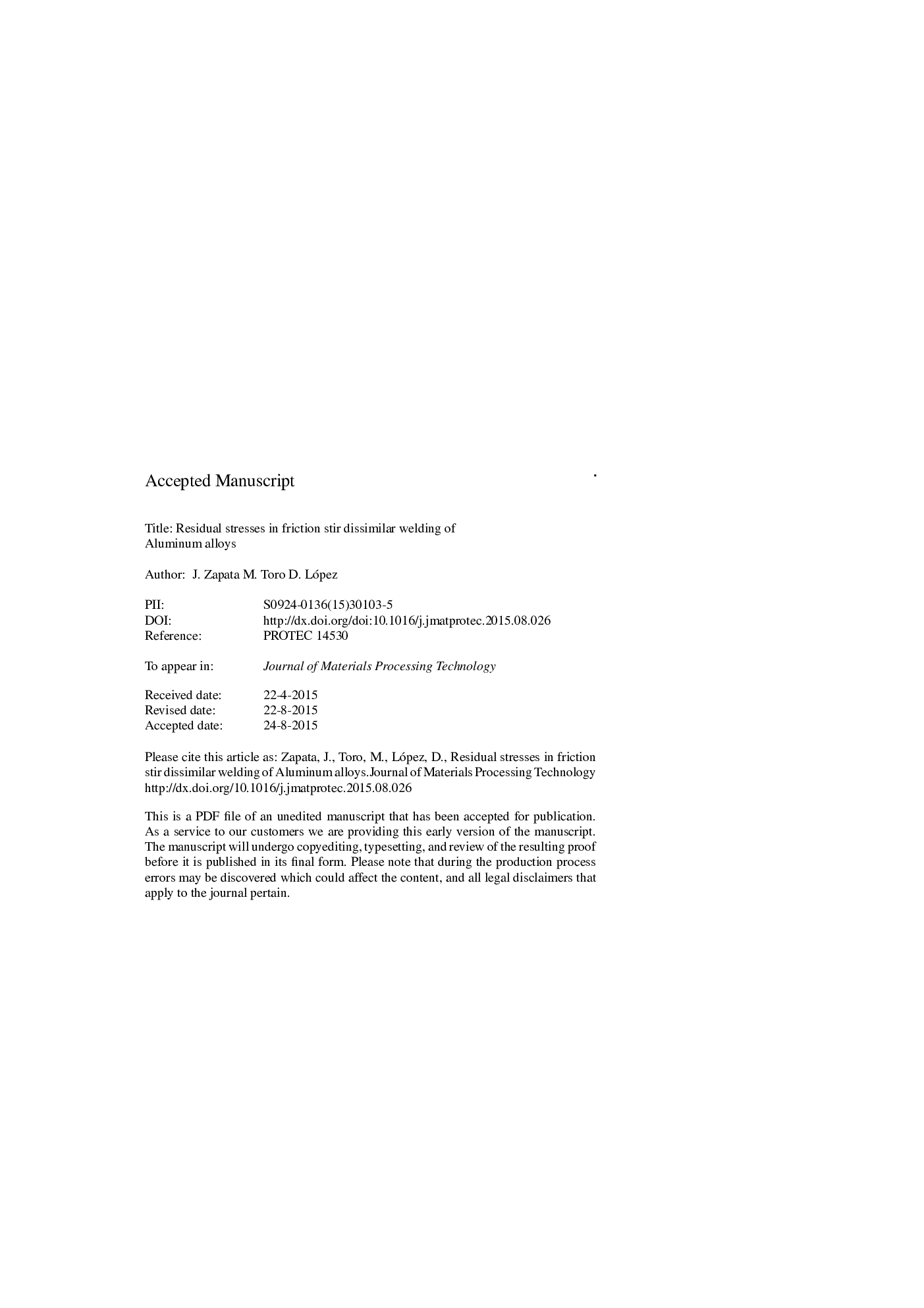| Article ID | Journal | Published Year | Pages | File Type |
|---|---|---|---|---|
| 7176795 | Journal of Materials Processing Technology | 2016 | 25 Pages |
Abstract
The effect of the rotational and welding speed on the residual stresses of dissimilar friction stir welds of aluminum alloys AA2024-T3 and AA6061-T6 were studied using X-ray Diffraction. The methodology used to obtain the residual stresses is presented in detail, including the measuring parameters and software corrections used. The proposed methodology allowed to obtained low scatter in the residual stress measurements as presented in the results. The most significant variations in the residual stresses behavior and magnitude were related with the modification of the rotational speed. The effect of increasing the rotational speed is a reduction in the magnitude of the longitudinal residual stresses. This was directly associated with the increase of heat input and the reduction of thermal mismatch between the different zones of the weld. The influence of the welding speed on the residual stress was not significant when compared with the effect of the rotational speed, generating only a slightly increment in the profile of the retreating side when it was increased.
Related Topics
Physical Sciences and Engineering
Engineering
Industrial and Manufacturing Engineering
Authors
J. Zapata, M. Toro, D. López,
